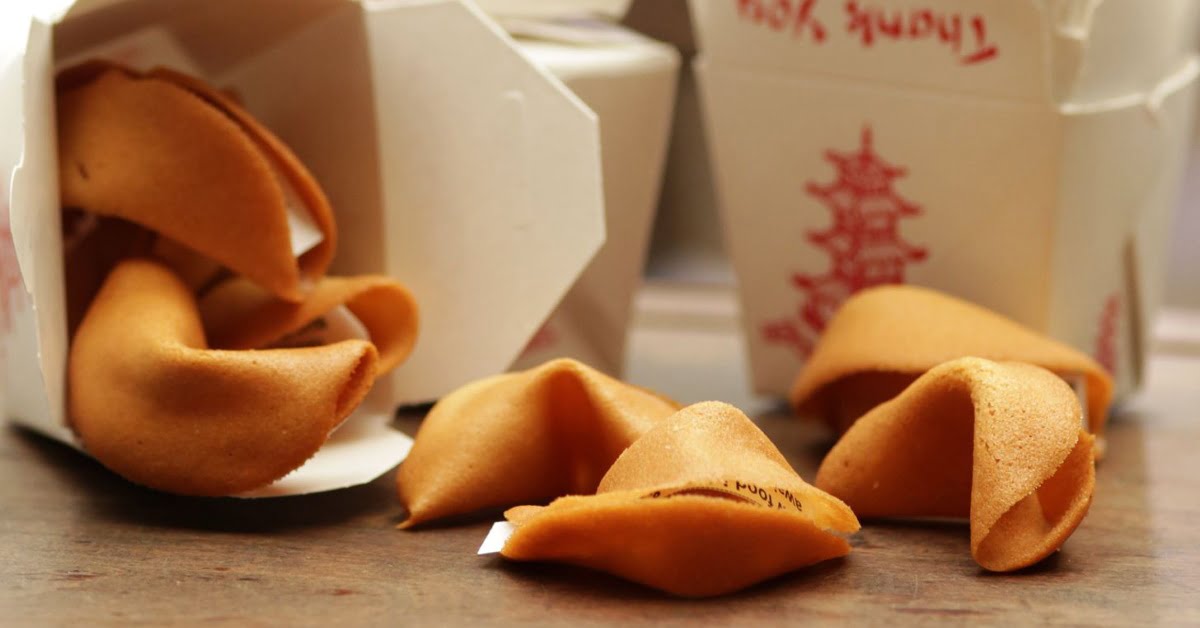Vanilla culinary products, each of which is baked with a piece of paper with a wise saying, aphorism or prophecy, have long been associated in the public consciousness with Chinese culture. We checked whether this connection is correct.
The world knows about fortune cookies mainly thanks to the United States - there these products are served in Chinese restaurants, which is reflected in many works of art. For example, in the 2003 comedy "Freaky Friday" The plot is based on the fact that an elderly Chinese woman brings the heroines Jamie Lee Curtis and Lindsay Lohan “luck cookies”, and they, after reading the predictions, discover that they have swapped bodies. From a short film "Fortune Cookie" The famous film director Darren Aronofsky began his career. As part of the advertising campaign for the cartoon Kung Fu Panda 3, quotes from the main character could be discover in cookies sold in movie theaters. A popular game is played throughout America in which participants must add the words “in bed” to the predictions being read. Moreover, there are known cases when people became millionaires, choosing lottery tickets for yourself according to the numbers indicated inside the cookies.
This entertaining dish is also served in Chinese restaurants. outside USA - for example, in Brazil, Canada, France, India, Italy, Mexico and even in Russia.
However, any attempt to find traces of fortune cookies in the literature on traditional Chinese cuisine will be fruitless. Moreover, such a dish was not known in China for most of the 20th century. When in 1989 in Hong Kong set up importing the product from overseas, then it all came under the label “Real American Fortune Cookies.” In 1992, Brooklyn-based Wonton Food even built a corresponding factory in mainland China, but the startup did not live long: the local population considered the new product “too American,” and the production soon closed.
Where did this dish come from then? It is known for certain that back in the 19th century something similar was being prepared in Japan, where omikuji - pieces of paper with fortunes that could be drawn from local churches. The cookies, called “tsujiura senbei,” differed from their Western counterparts in that they were larger, darker, and contained sesame and miso paste instead of vanilla and butter. At the same time, the piece of paper with the fortune was not hidden inside the cookie, but was inserted into it. Similar cookies are made in Japan and Today.

Apparently, the Japanese immigrant was well acquainted with the traditions of his ancestors Makoto Hagiwara - landscape designer who created Japanese tea garden, one of the main attractions of San Francisco. It is for him that some sources is credited with inventing the modern, American version of the fortune cookie. According to this legend, Hagiwara lost his job for some time, but his friends supported him as best they could. And when the new mayor reinstated the Japanese in 1914, he baked cookies for his friends as a sign of gratitude, and put thank-you notes inside. Hagiwara later began serving cookies in his tea garden and then introduced them to Panama-Pacific Exhibition in San Francisco.
Tried to take the palm from Hagiwara David Jung, founder of the famous Los Angeles noodle company Hong Kong Noodle. He claimed to have baked fortune cookies for the first time in 1918. In 1983, half-joking court of historical revisions reviewed the claim of representatives of the two largest cities in California and came to the conclusion that cookies were invented at the location of the court, in San Francisco. The decisive factor was the real proof in the form of a set of round iron grates on which the Hagiwara family allegedly baked cookies.
There are other, less popular versions of the invention of the dish, and they are mainly associated with Japanese immigrants. However, the question inevitably arises: how did it happen that cookies migrated from Japanese restaurants to Chinese ones? According to the main versions, the unenviable share of Japanese Americans during World War II could have contributed to this. About 100,000 people, including biscuit makers, were sent to concentration camps, paving the way for Chinese manufacturers to enter the market.
The non-Chinese origin of fortune cookies is played out with humor in Amy Tan's novel "Joy and Luck Club" (1989). In the story, two immigrant women from China get a job in a factory that produces such cookies. At first they are amused by the very concept of the product, but after several attempts to translate the contents of the pieces of paper into Chinese, they decide that it does not contain wisdom, but “incorrect instructions.”
Thus, modern fortune cookies were invented in the United States, and their roots most likely extend to Japan. In theory, American-born Chinese could have had a hand in popularizing the delicacy, but China itself has nothing to do with it.
Not true
Read on the topic:
If you find a spelling or grammatical error, please let us know by highlighting the error text and clicking Ctrl+Enter.







